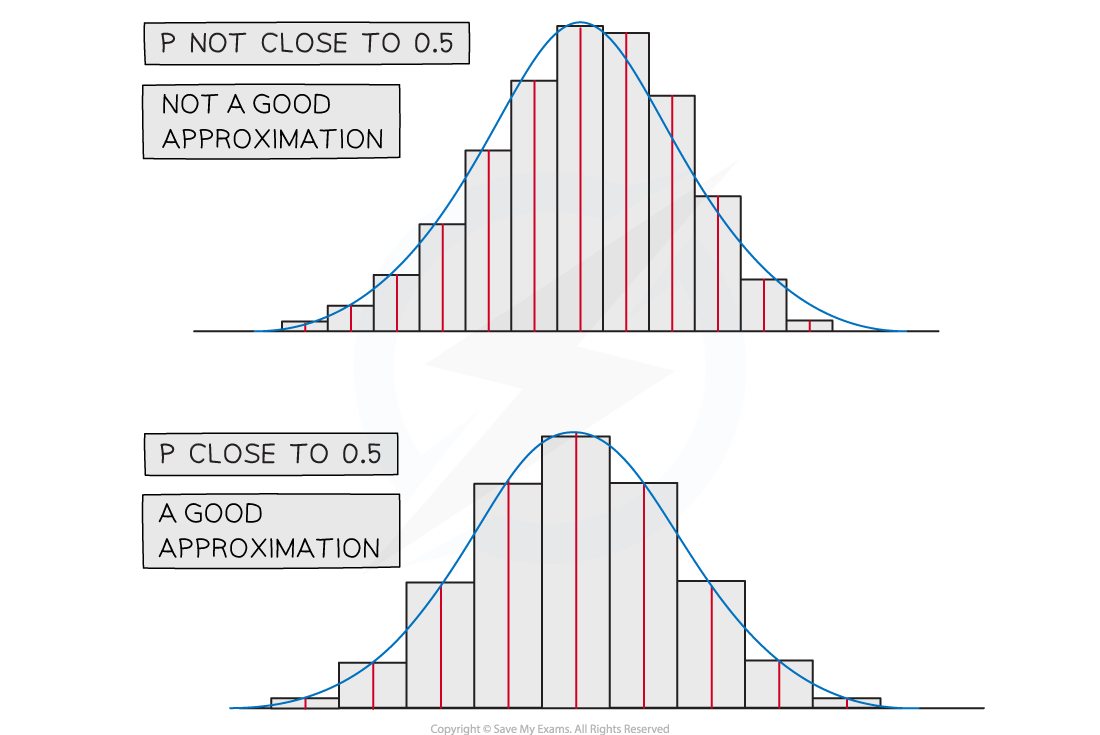Normal Approximation of Binomial (Edexcel A Level Maths) : Revision Note
Did this video help you?
Normal Approximation of Binomial
When can I use a normal distribution to approximate a binomial distribution?
A binomial distribution
can be approximated by a normal distribution
provided
n is large
p is close to 0.5
The mean and variance of a binomial distribution can be calculated by:

Why do we use approximations?
These days calculators can calculate binomial probabilities so approximations are no longer necessary
However it is easier to work with a normal distribution
You can calculate the probability of a range of values quickly
You can use the inverse normal distribution function (most calculators don't have an inverse binomial distribution function)
What are continuity corrections?
The binomial distribution is discrete and the normal distribution is continuous
A continuity correction takes this into account when using a normal approximation
The probability being found will need to be changed from a discrete variable, X, to a continuous variable, XN
For example, X = 4 for binomial can be thought of as
for normal as every number within this interval rounds to 4
Remember that for a normal distribution the probability of a single value is zero so
How do I apply continuity corrections?
Think about what is largest/smallest integer that can be included in the inequality for the discrete distribution and then find its upper/lower bound
You add 0.5 as you want to include k in the inequality
You subtract 0.5 as you don't want to include k in the inequality
You subtract 0.5 as you want to include k in the inequality
You add 0.5 as you don't want to include k in the inequality
For a closed inequality such as
Think about each inequality separately and use above
Combine to give
How do I approximate a probability?
STEP 1: Find the mean and variance of the approximating distribution
STEP 2: Apply continuity corrections to the inequality
STEP 3: Find the probability of the new corrected inequality
Use the "Normal Cumulative Distribution" function on your calculator
The probability will not be exact as it is an approximate but provided n is large and p is close to 0.5 then it will be a close approximation
Worked Example
The random variable .
Use a suitable approximating distribution to approximate .

Examiner Tips and Tricks
In the exam, only use a normal approximation if the question tells you to. Otherwise use the binomial distribution.

You've read 0 of your 5 free revision notes this week
Unlock more, it's free!
Did this page help you?
